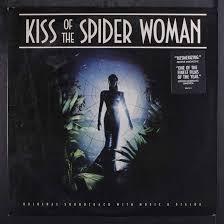Understanding Kiss of the Spider Woman: Themes and Impact

Introduction
Kiss of the Spider Woman, a musical originally based on Manuel Puig’s novel, first burst onto the scene in 1992. This production has become pivotal in the realm of theatre due to its exploration of complex themes such as love, freedom, and oppression. Not only is it a rich narrative set against the backdrop of political unrest, but it also questions the boundaries of human relationships. With recent revivals and adaptations, its relevance continues to shape discussions in contemporary theatre.
Synopsis and Themes
The story revolves around the lives of two men sharing a prison cell in an unnamed South American country under a repressive regime. Valentin, a political prisoner, represents the fight for freedom, while Molina, a homosexual man serving time for his sexual orientation, offers a contrasting perspective rooted in fantasy and escapism. The titular “Kiss of the Spider Woman” refers to a film that Molina narrates throughout the story, reflecting his inner struggles and providing a metaphor for seduction and the dangerous allure of escape.
The duality of the characters’ experiences raises significant questions about identity and the roles of love and desire in times of oppression. The interplay between harsh realities and the transformative power of storytelling is a central theme, highlighting how art can provide solace and hope even in the darkest circumstances.
Recent Revivals and Cultural Impact
In recent years, Kiss of the Spider Woman has seen various productions, including a notable revival in the West End in 2021, drawing in a new generation of theatre-goers. Critics praise the show for its emotional depth, stunning visuals, and the poignant performances that reflect the struggles faced by marginalized communities. This revival not only celebrates the original creative vision but also inspires vital conversations regarding the intersectionality of identity and politics.
The musical’s impact is also resonant in its ability to facilitate discussions about LGBTQ+ rights and the role of storytelling in activism. With continuing societal changes, Kiss of the Spider Woman stands as an emblematic piece urging audiences to reflect on their perceptions of love and the fight against systemic oppression.
Conclusion
Kiss of the Spider Woman remains more than just a theatrical experience; it serves as a critical lens into the complexities of human relationships entwined within societal struggles. As the narrative continues to evolve through various adaptations across different cultures, it invites contemporary audiences to engage with its themes of love and sacrifice. Looking ahead, the ongoing relevance of Kiss of the Spider Woman underscores its power to inspire dialogue and action within both the artistic community and broader society.









